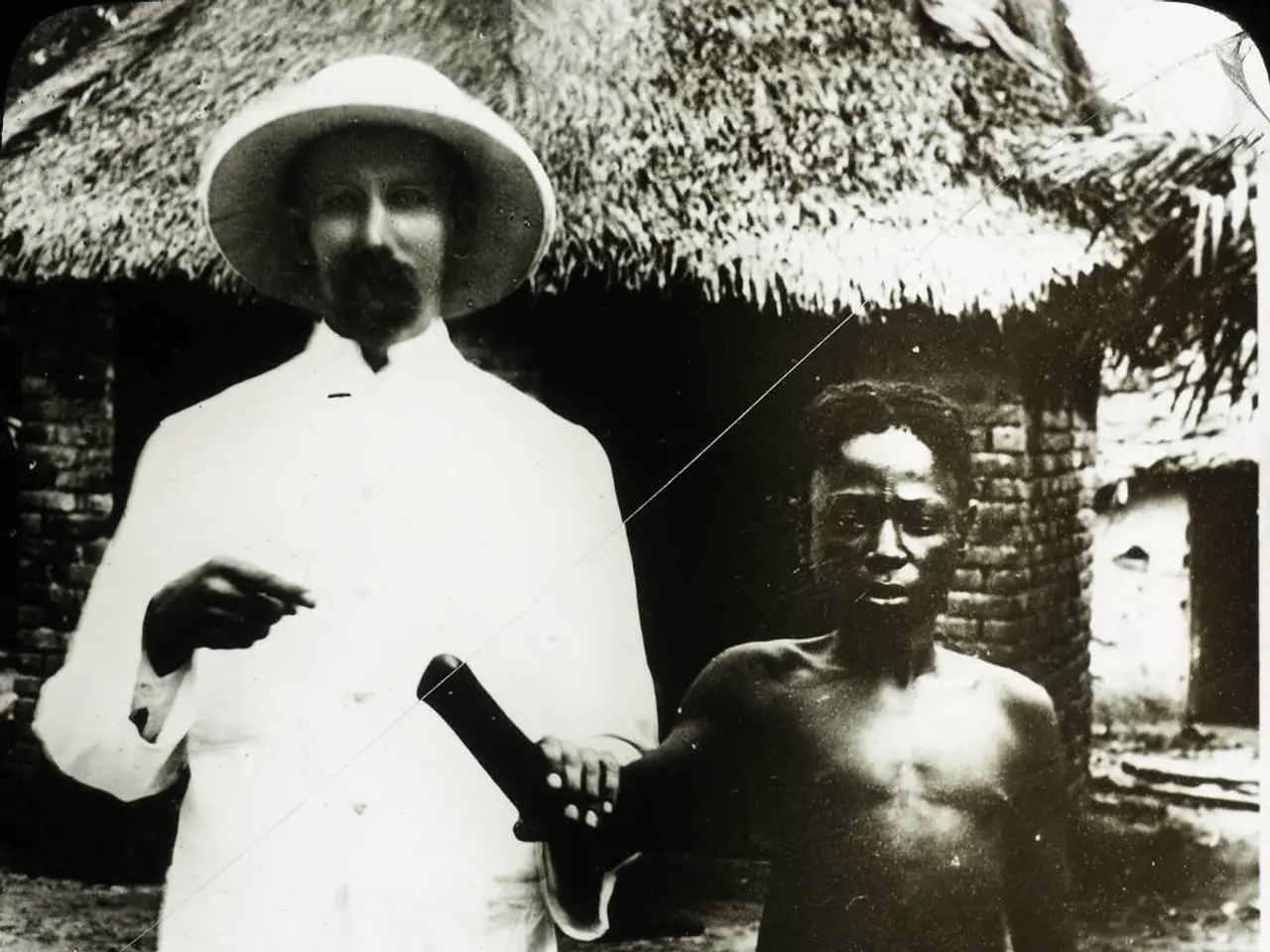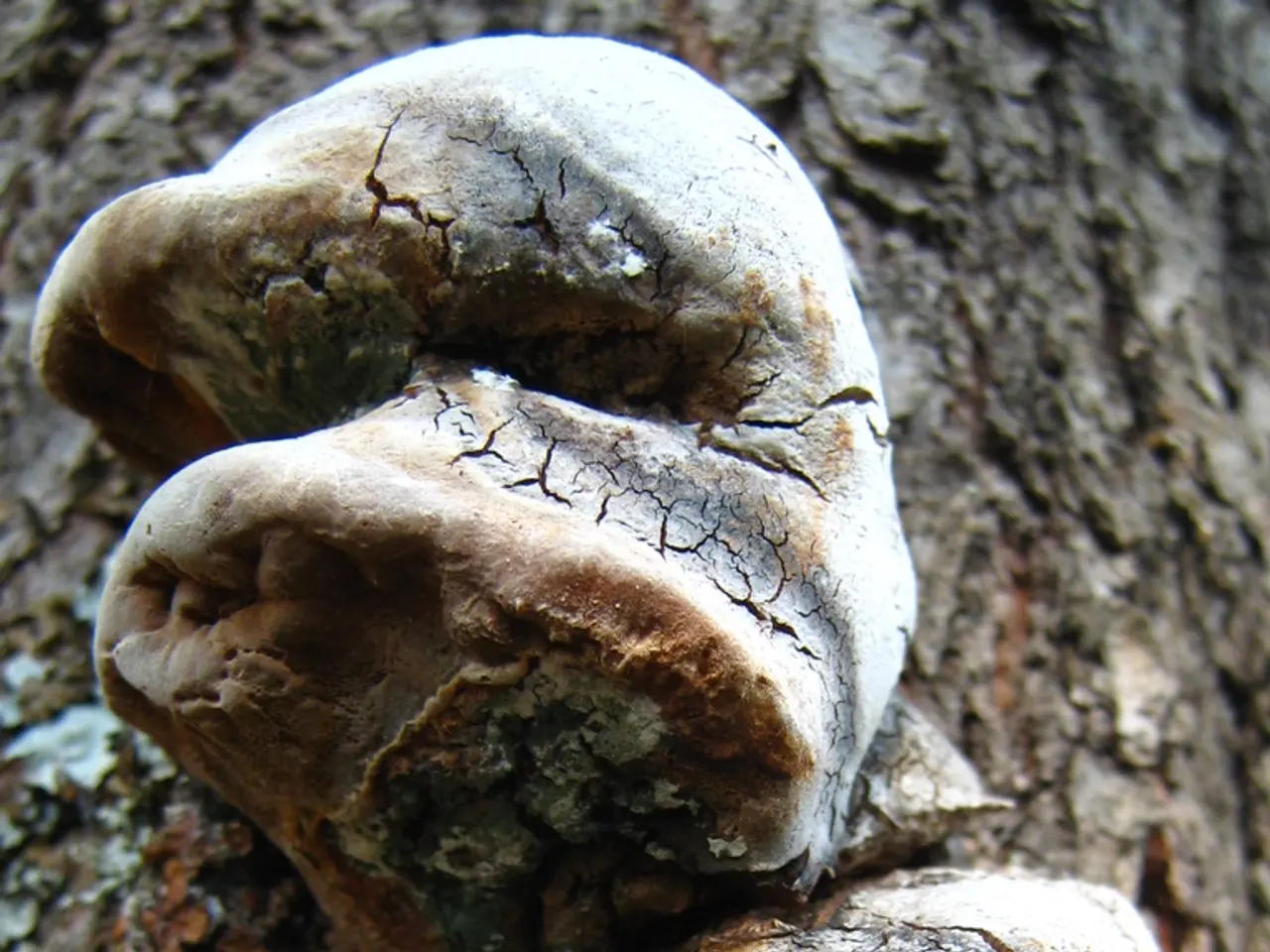Lymphoma skin manifestations: Images, identification, and remedy explanations
Mycosis fungoides (MF), a type of cutaneous T-cell lymphoma, is the most prevalent form of this cancer that primarily affects the skin. Characterised by a progressive clinical course, MF typically presents with skin involvement and can be challenging to diagnose due to its variability and similarity to other skin conditions.
### Common Characteristics of Mycosis Fungoides
MF progresses through three distinct stages: the patch stage, plaque stage, and tumour stage. In the initial patch stage, few, often large, red or red-brown patches appear on sun-protected areas such as the chest, upper arms, thighs, and trunk. These lesions may have a crinkled surface or a poikilodermatous pattern, with alternating brown, red, and white patches plus telangiectasias. In the plaque stage, patches evolve into thicker, scaly plaques, and in the tumour stage, advanced progression may result in tumour formation.
MF can present in various ways, sometimes resembling other skin conditions like eczema or infections, and certain rare variants like zosteriform MF exhibit lesions following a dermatomal distribution, complicating diagnosis. Common symptoms include itching (pruritus), redness, scaling, and skin thickening or lichenification, though itching varies.
### Diagnosis
Diagnosis of MF is based on characteristic skin lesions and their progression, supported by skin biopsies that typically show atypical T-cell infiltrates in the epidermis and dermis. Due to the variable appearance and resemblance to benign skin conditions, diagnosis can be challenging and delayed. Additional tests, such as immunohistochemistry and molecular studies, may be conducted to confirm T-cell clonality and exclude other conditions.
### Treatment
Treatment for MF is tailored to the disease stage and extent of skin involvement. In early stages, skin-directed therapies, such as topical corticosteroids, phototherapy (e.g., PUVA), topical chemotherapeutic agents, and localised radiotherapy, are often used. Advanced stages or refractory cases may require systemic therapies, including methotrexate, systemic corticosteroids, immunosuppressive agents, and newer targeted therapies or biologics.
Zosteriform MF and other variants may show variable responses to these treatments, sometimes with partial improvement and occasional recurrences. Surgery is not a common treatment for cutaneous T-cell lymphoma unless an isolated plaque is present in certain types of this lymphoma.
In 2016, a study reported that 81% of people responded to a combination of drug and UV light therapy, demonstrating the effectiveness of combination therapies in treating MF.
Lymphoma can occur in anyone, but it is more common in people in their 50s and 60s. The rash from MF is generally itchy and appears in a bathing suit distribution, commonly on the buttocks and thighs.
While MF is a chronic condition, early detection and appropriate treatment can significantly improve the prognosis for those affected. It is essential to consult a healthcare professional if any concerning skin changes or symptoms arise.
- Despite being the most prevalent form of cutaneous T-cell lymphoma, Mycosis Fungoides (MF) can sometimes be difficult to diagnose due to its variability and resemblance to other skin conditions, such as atopic dermatitis or infections.
- In the initial patch stage of MF, few, often large, red or red-brown patches may appear on sun-protected areas like the chest, upper arms, thighs, and trunk, sometimes presenting a crinkled surface or a poikilodermatous pattern.
- As MF progresses through its stages, it can lead to the development of advanced medical-conditions like diabetes, arthritis, depression, and even cancer.
- The rash from Mycosis Fungoides is generally itchy and appears in a bathing suit distribution, commonly on the buttocks and thighs, which can make daily skin-care and health-and-wellness routines challenging.
- In the plaque stage of MF, patches evolve into thicker, scaly plaques, and in the tumour stage, advanced progression may result in tumour formation, resembling otherlymphomas.
- Diagnosis of MF requires characteristic skin lesions, their progression, and skin biopsies that show atypical T-cell infiltrates in the epidermis and dermis, with additional tests like immunohistochemistry and molecular studies to confirm T-cell clonality and exclude other conditions.
- The predictive science suggests that combination therapies, such as drug and UV light therapy, can be highly effective in treating MF, as demonstrated by a study reporting that 81% of people responded to this approach.
- People of any age can develop lymphoma, but it is more common in people in their 50s and 60s.
- Macular changes to the skin can be a common symptom of Mycosis Fungoides, along with itching, redness, scaling, and skin thickening or lichenification.
- In early stages of MF, skin-directed therapies and treatment may help improve the prognosis, emphasizing the importance of early detection and consulting a medical professional for any concerning skin changes or symptoms.




